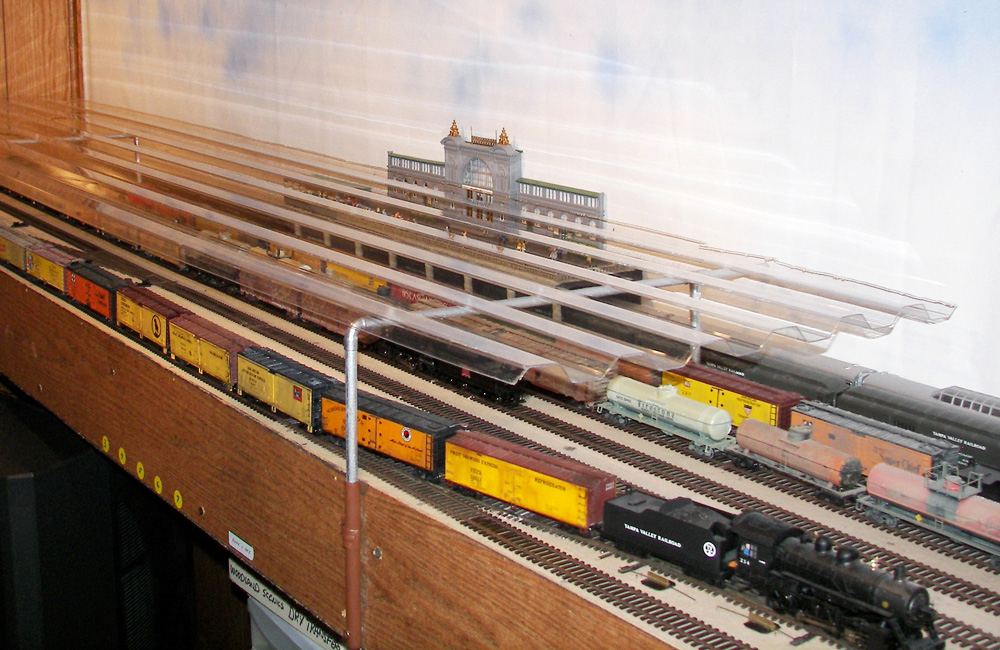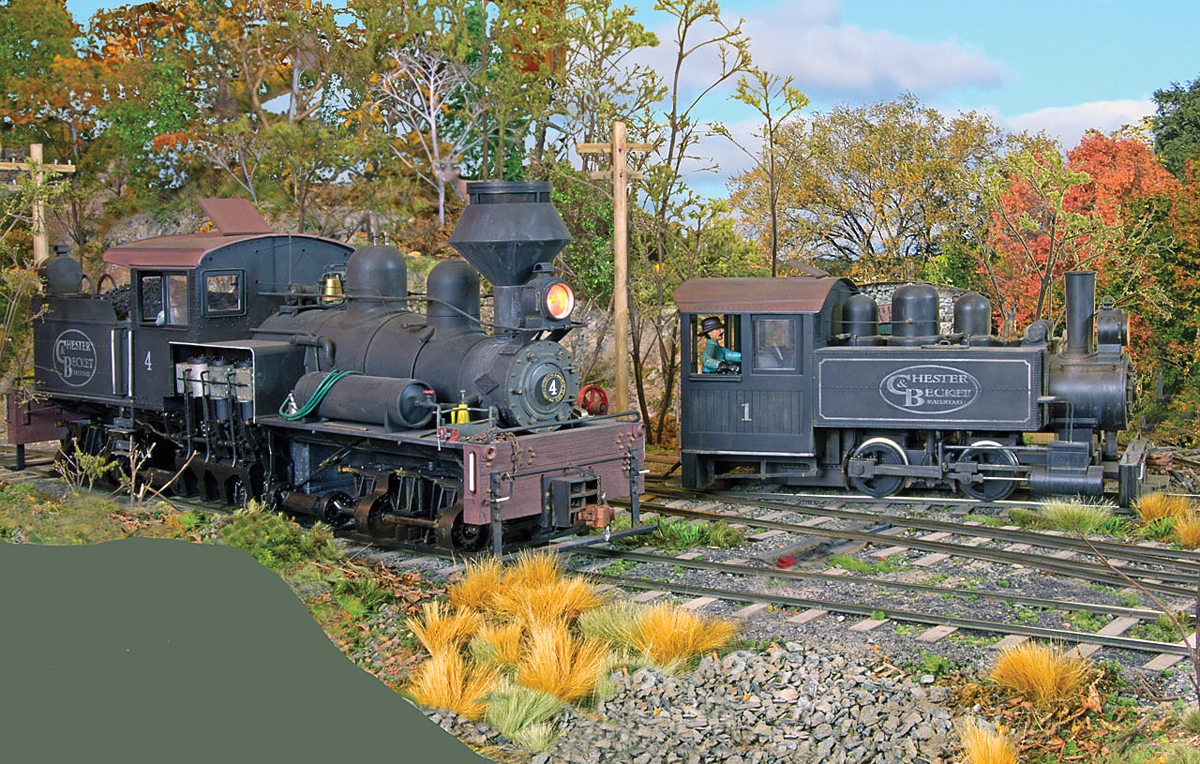
Q: I’m relatively new to the hobby and am seriously thinking about expanding my 4 x 8-foot HO scale layout to something larger. When I read about all the great layouts that appear in your magazine every month, I often wonder how you keep a large layout clean and free from dust. Right now I can easily cover my layout with a plastic tarp to keep it clean. But how do you keep a layout clean that takes up an entire basement? – Jeff Stavash, Lumberton, N.J.
A: While high-efficiency HVAC filtration systems and portable air filters can help reduce the dust in the air of your train room, they can only do so much. So modelers have come up with a number of different schemes for keeping dust off their layouts. The first strategy is to reduce the dust generated in the room. Finished, painted walls and ceilings and carpeted floors (frequently vacuumed) can help with that.
To shelter the layout itself, some sort of cover is called for. Bob Rothe of Boulder, Colo., showed in Jim Hediger’s December 2009 “Workshop” column how he uses removable pipe and dowel supports to hold plastic dust covers above his layout when not in use (as seen in the photo above). We’ve seen other modelers who have installed a hinged backdrop that can be folded down into a lid over a shelf layout; support rods disguised as smokestacks or tall trees keep it off the scenery. Others hang tarps or drapes from the ceiling valance when the layout is not in use (see “Add a valance and dust cover” by Howard Lloyd in our June 2012 issue). Hopefully one of these ideas can help you.
Q: I model a small fictitious Midwest short line interchanging with the Chicago, Burlington & Quincy in approximately 1970. Would it be plausible for my railroad to receive one or two piggyback cars in interchange to be unloaded at a single or double spur with unloading ramps? The unloading spur would be treated as any other small industry. Or would the piggyback unloading process take place at a regional hub of the CB&Q, rather than being routed to a short line? – John Vansack, Berwyn, Ill.
A: Hi, John. Intermodal traffic, such as trailers on flatcars, was interchanged as freely as any other kind of freight car in the era you model. Jeff Wilson, author of the book Piggyback & Container Traffic (available in the Kalmbach Hobby Store, kalmbachhobbystore.com/product/book/12804) says that such interchange was the impetus for the formation of Trailer Train, now named TTX. “Small local ramps were pretty common on most railroads through the 1960s and even into the 1970s, when larger terminals became dominant,” Wilson says. A piggyback unloading spur like you describe is a great way to add traffic to a small model railroad without taking up a lot of space.
Q: I have a stockcar whose couplers hang down low enough that they catch on turnouts and diamonds. How can I get them up to the right height? Will a coupler shim work or do I need to do something else? – Joseph J. Kuepfer, Milverton, Ont.
A: The answer depends on what is responsible for your coupler’s trip pin hanging too low. Does the coupler itself droop loosely in the draft-gear box? If the draft-gear box cover is attached with a screw, tighten it; if it’s the clip-on type, consider drilling and tapping the pivot pin so you can add a screw. (Group Technical Editor Cody Grivno shot an Expert Tips video showing how to use a tap and drill set; Trains.com Unlimited Members can watch it at trains.com/mrr/videos-photos/videos/how-to/expert-tips/video-tapping-screw-holes/). If the coupler is solid in the draft-gear box but your coupler height gauge shows it’s mounted too low, either replace the coupler with an underset shank like the Kadee no. 147, or shim the entire car upward by adding a pair of fiber washers between the trucks and bolster. Finally, if the coupler is securely mounted at the correct height, and the problem is simply the trip pin, you can bend it upward slightly with a pair of trip pin pliers like this one from Micro-Mark: micromark.com/Trip-Pin-Bending-Plier-HO-and-O-Scale.
Send us your questions
Do you have a question about model railroading you’d like to see answered in Ask MR? Send it to associate editor Steven Otte at AskMR@MRmag.com.














Since I have worked with layouts that are no larger than 8 X 4 & smaller, the cheapest, yet most effective way I have kept dust off my layout since they’re so small and table like, is painters “see-through” (“dust/paint”), Covers !!! you can buy a single which pulls out to a 10 x 5 I leave or you can buy them in three packs and I know they’re available in different links and sizes according to the size of bedrooms living room so on and so forth ,,,…!!! ♦️🌊🐺♦️